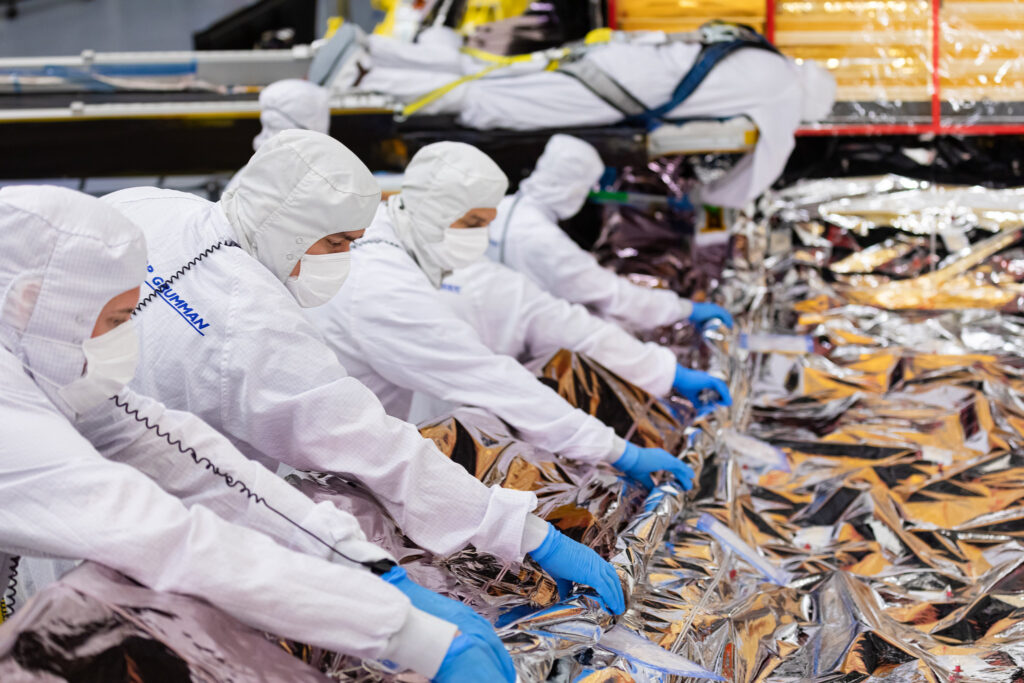How do you keep the Webb Space Telescope from melting in the sun? One Huntsville company figured it out
Reading time: 4 minutes

On Christmas Day, while you were likely opening presents, the world’s largest telescope was taking off from the Guiana Space Center in South America. We’ll tell you more about that amazing feat in a minute, but one of the coolest things about it is that a giant sunshield that makes the mission possible is the brainchild of Huntsville-based NeXolve. Keep reading for all the details.
The James Webb Space Telescope is NASA’s #1 priority + if it succeeds, it’s likely to radically transform how we see our universe
According to NASA, the world’s newest and largest telescope is on a grand mission—to explore the origins of the universe. If it’s successful, this mission could last 5-10 years, with the possibility of an extension.
ICYMI, we’ve got some amazing facts about the Webb Telescope for you:
- It’s an international collab involving NASA, European + Canadian Space Agency, 300 universities and organizations, plus companies from 29 US states and 14 countries, according to WAAYTV 13 in Huntsville.
- Six months from now, when it’s locked and loaded at its final destination—a spot called L2—it will be approximately one million miles from Earth. To put that in perspective, the Hubble Telescope is a mere 347 miles from the Earth.
- Instead of orbiting the blue planet, the Webb Telescope will be in a fixed orbit the sun. Cue this song.
- One cool thing about its orbit is that it will be in sync with the Earth’s orbit, so there should be constant communication.
- Scientists are expecting the first imagery back by June 2022.
NeXolve’s sunshield makes the whole James Webb Telescope mission possible

One of the essential parts of this project was the brainchild of Huntsville-based NeXolve. For about 15 years, they’ve been working on creating just the right kind of sunshield to make the James Webb Telescope *not* blister in the sun, or be blinded by the light.
According to CEO Jim Moore in an interview with WAAYTV 13, “NeXolve is responsible for protecting the telescope from the extreme heat in space. For the past 15 years, we’ve been developing the five-layer sunshield that…basically acts like a giant umbrella.”
To me, one of the coolest things about this sunshield is that it’s made with a material called Kapton that’s 1/1000th of an inch thick (FYI, that’s thinner than a human hair) and can protect against micro-asteroids.
Also, once it’s fully unfolded, the tennis court-sized sunshield will protect the telescope from the sun and the other brightest objects in the sky. To give you an idea of the temperature extremes it will be dealing with:
- Once it reaches its destination, “the sunshield will help keep the infrared sensor and other instruments chilled to a temperature of minus-370 degrees,” according to the LA Times.
Observatory Project Scientist Michael McElwain, from NASA’s Goddard Space Flight Center, sums it up the best:
“The Webb telescope and science instruments are ready to enter the shade, never again to see direct sunlight. One of Webb’s unique design features is using passive cooling by a five-layer sunshield to reach the telescope’s operational temperatures of 45 kelvins (-380 degrees Fahrenheit).”
These crazy-cold temperatures are necessary for the infrared sensors to work properly. The sunshield will have a warm side which always faces the sun and is close to the temperature at which water boils, and a cold side, always facing deep space, which is cold enough to liquefy air.
NeXolve’s not the only Huntsville-based company making waves in space. Find out about the Rocket City joint venture that secured a $76M NASA engineering contract.
Follow along on Where Is Webb to see the progress of the James Webb Telescope .



